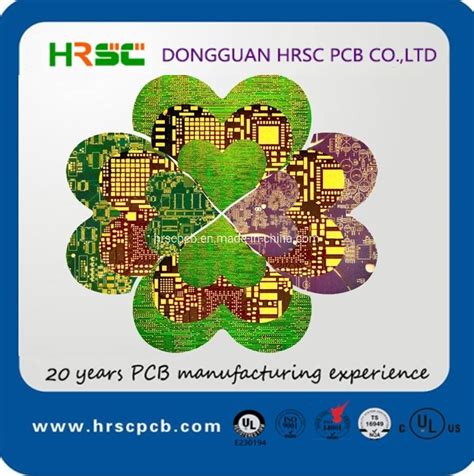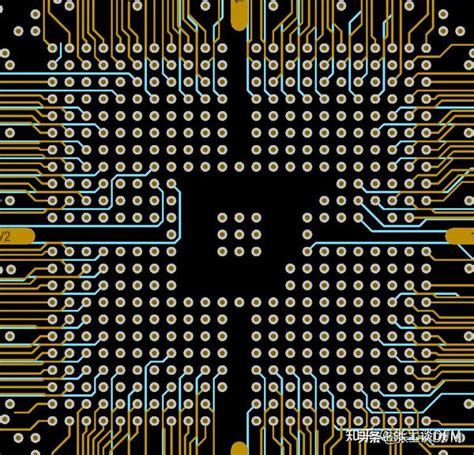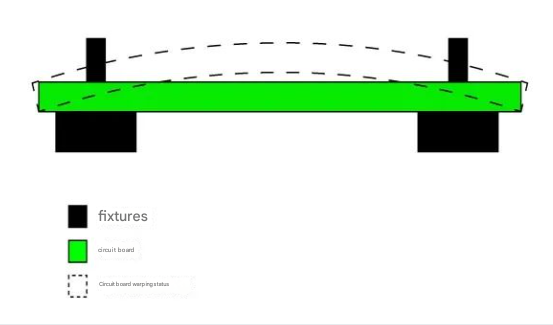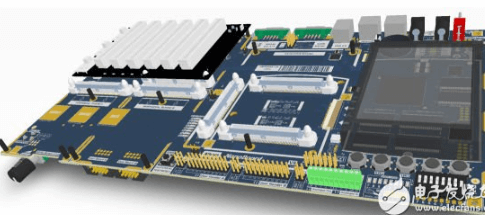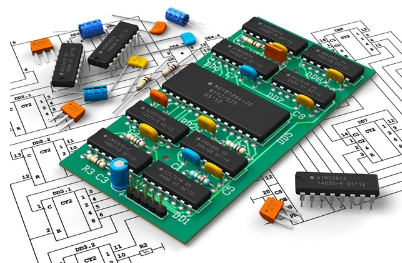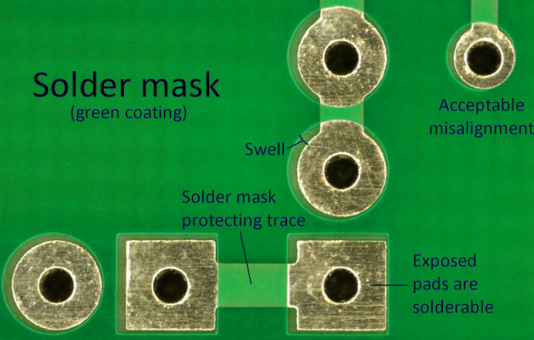Advanced LED PCB Manufacturers Elevating Lighting Technology
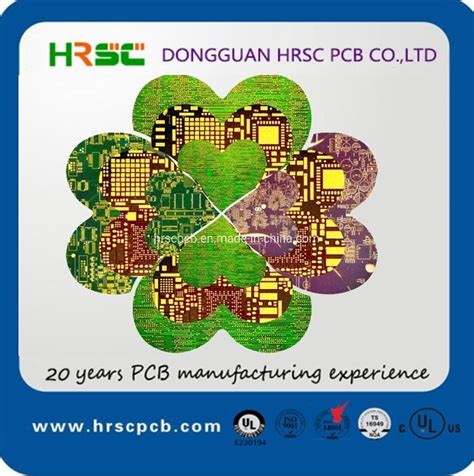
Key Takeaways
When exploring PCB manufacturing for LED applications, you’ll find that PCB manufacturing companies are redefining lighting technology through precision engineering and innovative materials. By optimizing PCB manufacturing cost, these companies deliver energy-efficient solutions that slash energy consumption by up to 80% compared to traditional systems. For instance, advanced thermal management techniques—such as metal-core PCBs and heat-dissipating substrates—ensure consistent performance even in high-temperature environments, extending product lifespans and reducing maintenance needs.
Customization is another cornerstone of modern PCB manufacturing business models. Leading manufacturers tailor designs to meet specific industry demands, whether for automotive lighting, medical devices, or smart buildings. This flexibility is achieved through automated production lines and rigorous quality controls, enabling rapid prototyping without compromising durability.
| Feature | Traditional PCBs | Advanced LED PCBs |
|---|---|---|
| Energy Efficiency | Moderate | Up to 80% improvement |
| Thermal Management | Basic heat sinks | Integrated metal-core designs |
| Customization Options | Limited | High precision and scalability |
| Cost Efficiency | Higher long-term maintenance | Lower lifecycle costs |
Tip: When selecting a partner for PCB manufacturing, prioritize companies that offer collaborative engineering support. This ensures your design aligns with both performance goals and PCB manufacturing cost constraints.
By leveraging advanced materials like ceramic substrates and high-density interconnects, manufacturers minimize energy loss while maximizing brightness and color accuracy. Such innovations are critical for applications like urban infrastructure, where reliability and efficiency are non-negotiable. For example, Andwin PCBA employs cutting-edge techniques to produce boards that withstand harsh environments while maintaining optimal performance.
Sustainability remains a driving force, with next-gen designs prioritizing recyclable materials and waste reduction. This shift not only lowers environmental impact but also aligns with global regulations, making PCB manufacturing companies key players in the push toward greener technology.
In summary, the evolution of LED PCBs hinges on balancing technical precision with economic viability—a balance achieved by innovators who understand the intricacies of modern PCB manufacturing business practices.
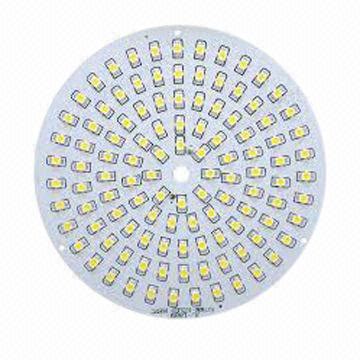
The Rise of LED PCB Technology in Modern Lighting Solutions
The rapid adoption of LED PCB technology has transformed how you experience lighting across residential, commercial, and industrial settings. At the heart of this shift are PCB manufacturing companies specializing in creating high-performance boards tailored for LEDs. These manufacturers leverage cutting-edge processes to optimize PCB manufacturing cost while delivering designs that maximize energy efficiency and longevity. By integrating advanced materials like aluminum substrates and copper-clad laminates, they ensure superior thermal management—a critical factor in maintaining LED brightness and lifespan.
Innovations in PCB manufacturing have enabled thinner, lighter boards that fit seamlessly into compact lighting fixtures without compromising heat dissipation. For instance, modern LED PCB board manufacturers employ automated assembly lines to achieve precision in component placement, reducing human error and minimizing waste. This streamlined approach not only lowers PCB manufacturing cost but also accelerates production timelines, making high-quality LED solutions more accessible.
The PCB manufacturing business has also embraced sustainability, with companies prioritizing recyclable materials and energy-efficient production methods. By reducing energy consumption by up to 80% compared to traditional lighting, LED PCBs are reshaping industries like automotive, healthcare, and smart infrastructure. Customization is another hallmark of leading manufacturers, who work closely with clients to design boards that meet exact specifications—whether for high-power streetlights or intricate wearable devices.
As demand grows, collaboration between engineers and PCB manufacturing companies continues to drive breakthroughs, ensuring that LED technology remains at the forefront of lighting innovation. By balancing affordability, durability, and performance, these advancements empower you to adopt eco-friendly lighting solutions without sacrificing quality.

Key Innovations Driving Energy Efficiency in LED PCB Manufacturing
To stay competitive in the PCB manufacturing industry, companies are prioritizing breakthroughs that slash energy consumption while boosting performance. One major advancement lies in the use of energy-efficient substrates like metal-core PCBs (MCPCBs) and high-performance laminates. These materials dissipate heat more effectively, reducing the strain on LED components and cutting overall power demand. By optimizing thermal pathways, PCB manufacturing companies ensure that less energy is wasted as heat, directly translating to longer lifespans for lighting systems.
Another game-changer is the adoption of precision etching techniques and automated assembly processes. These innovations minimize material waste during production, lowering PCB manufacturing cost while maintaining tight tolerances for circuit layouts. Advanced simulation tools also allow engineers to model energy flow before fabrication, identifying inefficiencies early in the design phase. For instance, embedding micro-vias and optimizing trace geometries reduces resistance, which further trims power usage.
Sustainability is now a cornerstone of the PCB manufacturing business, with manufacturers integrating recycled copper and halogen-free substrates. These eco-friendly choices not only align with global regulations but also reduce the carbon footprint of LED systems. Additionally, smart manufacturing practices—such as using renewable energy in factories—complement the energy-saving benefits of the end products.
Collaboration between lighting designers and PCB manufacturing experts has unlocked custom solutions tailored to specific applications. Whether it’s ultra-thin boards for automotive lighting or ruggedized designs for industrial settings, these partnerships ensure that every watt of energy is utilized efficiently. By merging cutting-edge materials, intelligent design, and sustainable practices, the industry is redefining what’s possible in energy-efficient lighting technology.
How Advanced Thermal Management Enhances LED PCB Performance
When you rely on LED PCB boards for lighting solutions, managing heat isn’t just an option—it’s a necessity. Advanced thermal management techniques are critical to ensuring longevity and optimal performance, especially as PCB manufacturing companies push the boundaries of energy efficiency. High-power LEDs generate significant heat, and without effective dissipation, this can degrade components, reduce brightness, and shorten lifespans. Modern PCB manufacturing processes address this by integrating materials like metal-core substrates and thermal vias that redirect heat away from sensitive areas.
Innovative designs, such as embedded heat sinks or ceramic-based boards, are now standard in high-performance LED PCBs. These solutions lower PCB manufacturing cost over time by minimizing failures and maintenance needs. For instance, using thermally conductive adhesives or copper-filled vias ensures heat spreads evenly, preventing hotspots that could compromise reliability. This precision is why partnering with experienced PCB manufacturing business leaders matters—they balance material choices and layout optimization to meet specific thermal requirements without over-engineering.
You’ll also notice how advanced thermal management aligns with sustainability goals. By reducing energy waste, these designs cut operational costs and environmental impact—key priorities for industries adopting LED technology. Whether it’s automotive lighting or industrial fixtures, efficient heat handling ensures consistent performance even in demanding conditions. As PCB manufacturing evolves, expect smarter integration of thermal simulations and AI-driven design tools to further refine heat dissipation strategies, ensuring your lighting systems stay ahead of the curve.
Customization and Precision: Core Strengths of Leading LED PCB Manufacturers
When you partner with top-tier PCB manufacturing companies, you gain access to tailored solutions that align with your specific project requirements. These manufacturers excel in balancing PCB manufacturing cost with high-performance outcomes, ensuring your designs meet exacting standards without compromising efficiency. By leveraging advanced techniques like laser drilling, automated optical inspection (AOI), and precision etching, they deliver LED PCB boards optimized for thermal management, signal integrity, and longevity.
Customization is at the heart of modern PCB manufacturing, enabling solutions for niche applications—whether it’s ultra-thin boards for wearable tech or high-power designs for industrial lighting. Leading firms use sophisticated software to simulate performance under real-world conditions, refining layouts to minimize energy loss and maximize durability. This attention to detail reduces long-term PCB manufacturing business expenses by mitigating failures and extending product lifecycles.
Precision engineering also plays a pivotal role in scalability. As demand grows, manufacturers employ modular workflows to adapt production volumes without sacrificing quality. This flexibility ensures that even complex designs, such as multi-layer boards with embedded components, remain cost-effective. Additionally, partnerships with PCB manufacturing companies often include collaborative R&D, allowing you to integrate emerging technologies like IoT connectivity or advanced heat-dissipation materials seamlessly.
By prioritizing customization and precision, these manufacturers empower industries—from automotive to healthcare—to adopt lighting systems that are not only energy-efficient but also future-proof. Whether you’re optimizing PCB manufacturing cost or pushing the boundaries of miniaturization, their expertise ensures your projects stay ahead in a rapidly evolving market.
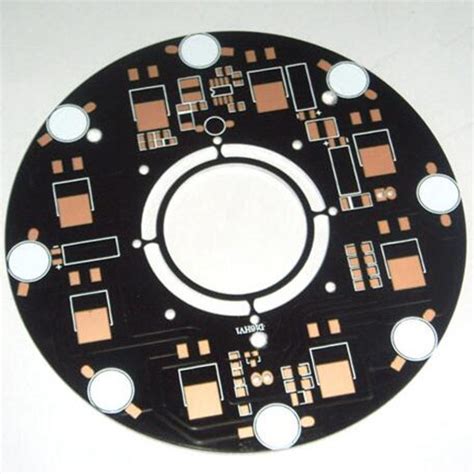
Industrial Applications Revolutionized by High-Performance LED Circuit Boards
High-performance LED circuit boards are transforming industries by enabling smarter, more efficient, and durable lighting solutions. From automotive systems to industrial machinery, pcb manufacturing companies are delivering tailored designs that meet rigorous operational demands. For example, in automotive lighting, advanced pcb manufacturing techniques ensure circuits withstand extreme temperatures and vibrations while maintaining brightness and energy efficiency. Similarly, in healthcare, precision-engineered LED PCBs provide consistent illumination for surgical equipment, reducing errors and enhancing safety.
One of the most significant advantages lies in how pcb manufacturing cost optimization allows businesses to scale solutions without compromising quality. By leveraging automated production and material innovations, manufacturers reduce waste and lower expenses, making high-performance LED PCBs accessible even for smaller enterprises. This cost-effectiveness is critical for industries like agriculture, where LED grow lights powered by efficient circuit boards improve crop yields while slashing energy consumption by up to 80%.
The pcb manufacturing business model also prioritizes customization. Whether it’s creating ultra-thin boards for wearable tech or rugged designs for outdoor signage, manufacturers collaborate closely with clients to address specific needs. In smart factories, LED-integrated sensors on circuit boards monitor equipment health in real time, preventing downtime and boosting productivity. These applications highlight how pcb manufacturing isn’t just about assembling components—it’s about engineering systems that drive innovation.
Durability remains a cornerstone of modern LED PCB designs. By integrating advanced thermal management and corrosion-resistant materials, manufacturers ensure longevity even in harsh environments. This reliability is vital for sectors like marine navigation or aerospace, where failure isn’t an option. As industries push toward sustainability, the role of pcb manufacturing companies in reducing energy waste and supporting eco-friendly practices becomes increasingly central.
By partnering with forward-thinking manufacturers, you gain access to solutions that balance pcb manufacturing cost, performance, and environmental impact—revolutionizing how industries light, monitor, and optimize their operations.

Sustainability and Environmental Benefits of Next-Gen LED PCB Designs
When you consider the environmental impact of modern lighting systems, next-generation LED PCB designs stand out for their ability to merge high performance with sustainability. By optimizing PCB manufacturing processes, leading PCB manufacturing companies now produce boards that minimize energy consumption while maximizing durability. For instance, advanced materials like halogen-free laminates and recyclable substrates reduce hazardous waste, aligning with global eco-friendly standards. These innovations not only lower the PCB manufacturing cost over time but also ensure that the PCB manufacturing business contributes positively to circular economy goals.
One of the most compelling advantages lies in energy efficiency. Modern LED PCBs consume up to 80% less energy than traditional lighting solutions, drastically cutting operational expenses and carbon footprints. Improved thermal management techniques—such as embedded heat sinks and high-conductivity layers—prevent overheating, extending product lifespans and reducing electronic waste. This longevity means fewer replacements, which translates to fewer resources consumed across the product lifecycle.
Additionally, the shift toward renewable energy integration in PCB manufacturing allows companies to power production facilities using solar or wind energy, further shrinking their environmental impact. Advanced automation in the PCB manufacturing business also reduces material waste during fabrication, ensuring precise cuts and minimal scrap. For industries like automotive or smart cities, adopting these eco-conscious designs means meeting stricter sustainability regulations without compromising on performance.
You’ll find that leading PCB manufacturing companies prioritize transparency, offering detailed reports on energy use, emissions, and recycling rates. By choosing partners committed to green practices, businesses can align their lighting solutions with broader corporate sustainability targets. Ultimately, the combination of innovative design, responsible PCB manufacturing cost strategies, and scalable production methods makes next-gen LED PCBs a cornerstone of environmentally conscious technological progress.

Future Trends: Smart Integration and Miniaturization in LED PCB Development
As lighting systems evolve, PCB manufacturing is pivoting toward smarter integration and compact designs to meet rising demands for efficiency and versatility. Leading PCB manufacturing companies now prioritize embedding intelligent features—such as IoT connectivity and adaptive control systems—directly into LED circuit boards. This shift enables lighting solutions to dynamically adjust brightness, color temperature, and energy consumption based on real-time data, reducing PCB manufacturing cost over time through optimized resource use.
Miniaturization is another critical focus, driven by industries needing smaller yet high-performing components. Innovations in PCB manufacturing business practices, like laser drilling and high-density interconnect (HDI) technology, allow for ultra-thin, lightweight boards without sacrificing durability or thermal performance. These advancements are particularly transformative in applications like wearable tech and automotive lighting, where space constraints demand precision engineering.
However, balancing miniaturization with thermal management remains a challenge. Cutting-edge manufacturers address this by integrating advanced materials, such as ceramic substrates or metal-core PCBs, which dissipate heat more effectively. This ensures reliability even in compact designs, extending the lifespan of energy-efficient lighting systems.
Collaboration between designers and PCB manufacturing experts is key to navigating these trends. By leveraging modular designs and scalable production methods, companies can reduce PCB manufacturing cost while accelerating time-to-market for next-gen lighting solutions. The result? A future where smarter, smaller LED PCBs drive sustainability and redefine what’s possible across industries—from smart cities to precision medical devices.
Collaborative Engineering: Partnering with Manufacturers for Cutting-Edge Lighting Solutions
When developing advanced lighting systems, partnering with PCB manufacturing companies ensures access to expertise that bridges design ambition and technical feasibility. By collaborating early in the design phase, you can optimize PCB manufacturing cost without compromising performance, leveraging economies of scale and material innovations. These partnerships enable tailored solutions—whether for high-density urban lighting or precision medical devices—by aligning your vision with the manufacturer’s capabilities in PCB manufacturing processes like multilayer stacking or hybrid material integration.
Leading PCB manufacturing businesses prioritize co-engineering, where iterative feedback loops refine thermal management, circuit layout, and durability. For instance, integrating advanced heat dissipation techniques directly into the PCB manufacturing workflow can extend LED lifespan by 30% or more, a critical factor in industrial or automotive applications. Customization also plays a pivotal role: manufacturers equipped with automated assembly lines and precision testing tools ensure that every board meets stringent quality standards, even for complex designs.
Cost efficiency remains a focal point. By analyzing PCB manufacturing cost drivers—such as material selection, layer count, or surface finishes—you can strike a balance between budget constraints and performance demands. Transparent collaboration helps identify cost-saving opportunities, like using standardized substrates for non-critical layers or adopting modular designs that simplify future upgrades.
Moreover, sustainability is woven into modern PCB manufacturing practices. Partnering with eco-conscious manufacturers reduces waste through optimized panel utilization and lead-free soldering, aligning with global energy efficiency goals. This synergy between innovation and responsibility not only elevates product quality but also future-proofs your lighting solutions in a competitive market.
Ultimately, successful partnerships hinge on choosing manufacturers who view PCB manufacturing as a collaborative art—transforming your concepts into reliable, scalable, and cutting-edge lighting systems.
Conclusion
In the evolving landscape of PCB manufacturing, advanced LED PCB manufacturers are redefining what’s possible in lighting technology. By leveraging cutting-edge techniques, these PCB manufacturing companies deliver solutions that prioritize energy efficiency, durability, and precision—critical factors for industries ranging from automotive to smart infrastructure. A key driver of this progress is the ability to optimize PCB manufacturing cost through economies of scale and innovative material use, enabling businesses to adopt high-performance LED systems without compromising budgets.
When you partner with top-tier PCB manufacturing business leaders, you gain access to tailored designs that address specific thermal, electrical, and spatial challenges. Advanced thermal management systems, for instance, ensure LEDs operate at peak efficiency, extending lifespan and reducing maintenance needs. Moreover, the shift toward miniaturization and smart integration in PCB manufacturing allows for sleeker, smarter lighting solutions that seamlessly adapt to IoT-enabled environments.
Sustainability remains a cornerstone of modern PCB manufacturing companies, with next-gen designs slashing energy consumption by up to 80% compared to traditional lighting. By prioritizing recyclable materials and eco-friendly processes, manufacturers align with global environmental goals while delivering cost-effective solutions. Whether upgrading industrial facilities or developing consumer electronics, the collaboration between innovators and PCB manufacturing experts ensures your projects stay ahead of technological curves.
FAQs
What makes LED PCBs more energy-efficient compared to traditional lighting systems?
Advanced PCB manufacturing techniques enable LED circuit boards to optimize power distribution and minimize energy loss. By integrating high-quality materials and precision designs, PCB manufacturing companies reduce energy consumption by up to 80% while maintaining superior brightness and longevity.
How do thermal management solutions improve LED PCB performance?
Efficient heat dissipation is critical for LED longevity. Leading manufacturers use specialized substrates and layered designs in PCB manufacturing to channel heat away from sensitive components. This prevents overheating, ensuring consistent performance even in demanding environments like automotive or industrial lighting.
Can LED PCBs be customized for specific applications?
Yes. Top PCB manufacturing companies collaborate closely with clients to tailor designs for unique requirements. Whether adjusting board thickness, material composition, or circuit layout, customization ensures compatibility with applications ranging to medical devices to architectural lighting.
What factors influence PCB manufacturing cost for LED projects?
Cost depends on design complexity, material choices (e.g., aluminum vs. FR-4), and production volume. While advanced features like thermal vias or high-density circuits may increase PCB manufacturing cost, they often yield long-term savings through enhanced durability and reduced maintenance.
How do PCB manufacturing businesses ensure sustainability in LED production?
Eco-friendly practices, such as using recyclable materials and minimizing waste during fabrication, are prioritized. Energy-efficient manufacturing processes and RoHS-compliant components further reduce environmental impact, aligning with global sustainability goals.
Why should you partner with specialized LED PCB manufacturers?
Expertise in PCB manufacturing ensures reliability, performance, and compliance with industry standards. Established manufacturers offer end-to-end support—from prototyping to mass production—helping you innovate faster while controlling PCB manufacturing cost.
Explore Custom LED PCB Solutions Today
Ready to elevate your lighting projects? Click here to discover how Andwin PCB delivers cutting-edge PCB manufacturing services tailored to your needs.

